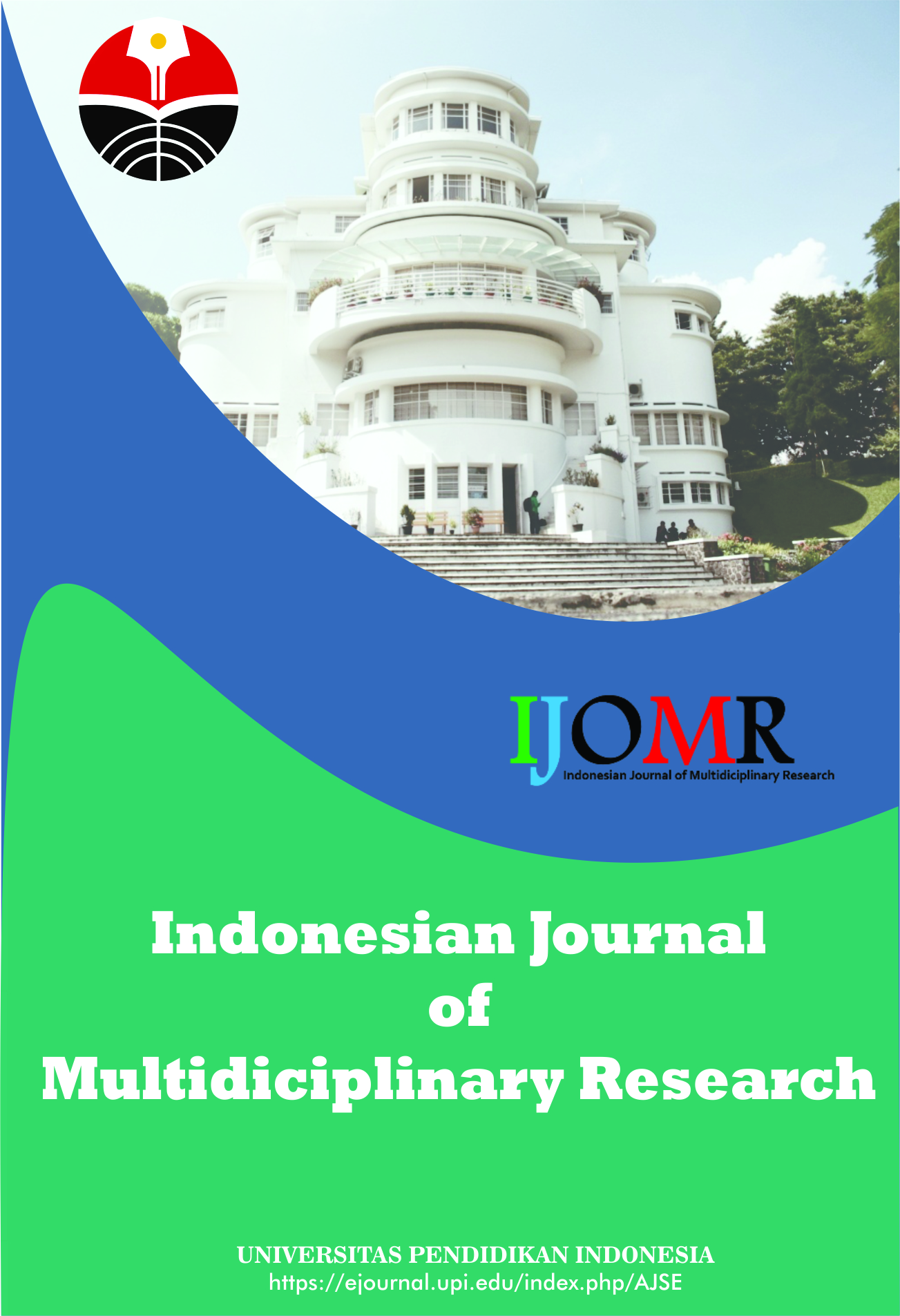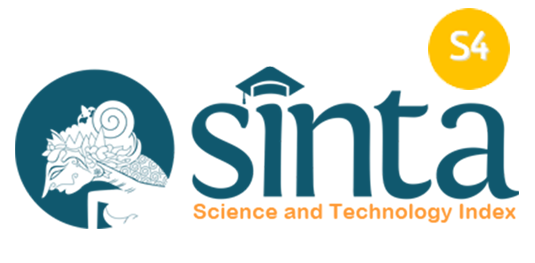Effect of Onion Peel Tea Supplementation and Exercise Against Hypercholesterolemia and Cardiovascular Risk Factors in Obese Women: Education and Randomized Control Trial
Abstract
Keywords
Full Text:
PDFReferences
Arita, Y., Kihara, S., Ouchi, N., Takahashi, M., Maeda, K., Miyagawa, J. I., Hotta. K., Shimomura. L., Nakamura. T., Miyaoka. K., Kuriyama. H., Nishida. M., Yamashita. S., Okubo. K., Matsubara. K., Muraguchi. M., Ohmoto. Y., Funahasi. T., and Matsuzawa, Y. (1999). Paradoxical decrease of an adipose-specific protein, adiponectin, in obesity. Biochemical and Biophysical Research Communications, 257(1), 79-83.
Cardoso, G. A., Salgado, J. M., Cesar, M. D. C., and Donado-Pestana, C. M. (2013). The effects of green tea consumption and resistance training on body composition and resting metabolic rate in overweight or obese women. Journal of Medicinal Food, 16(2), 120-127.
Corzo-Martínez, M., Corzo, N., and Villamiel, M. (2007). Biological properties of onions and garlic. Trends in food science & technology, 18(12), 609-625.
Fasshauer, M., and Paschke, R. (2003). Regulation of adipocytokines and insulin resistance. Diabetologia, 46(12), 1594-1603.
Gnacińska, M., Małgorzewicz, S., Stojek, M., Łysiak-Szydłowska, W., and Sworczak, K. (2009). Role of adipokines in complications related to obesity. A review. Advances in Medical Sciences (De Gruyter Open), 54(2), 150-157.
Hertog, M. G., Feskens, E. J., Kromhout, D., Hollman, P. C. H., and Katan, M. B. (1993). Dietary antioxidant flavonoids and risk of coronary heart disease: the Zutphen Elderly Study. The Lancet, 342(8878), 1007-1011.
Hsu, C. L., and Yen, G. C. (2007). Effects of flavonoids and phenolic acids on the inhibition of adipogenesis in 3T3-L1 adipocytes. Journal of agricultural and food chemistry, 55(21), 8404-8410.
Kim, O. Y., Lee, S. M., Do, H., Moon, J., Lee, K. H., Cha, Y. J., and Shin, M. J. (2012). Influence of quercetin‐rich onion peel extracts on adipokine expression in the visceral adipose tissue of rats. Phytotherapy Research, 26(3), 432-437.
Knekt, P., Kumpulainen, J., Järvinen, R., Rissanen, H., Heliövaara, M., Reunanen, A., Hakulinen. T., and Aromaa, A. (2002). Flavonoid intake and risk of chronic diseases. The American Journal of Clinical Nutrition, 76(3), 560-568.
Lee, C. D., Blair, S. N., and Jackson, A. S. (1999). Cardiorespiratory fitness, body composition, and all-cause and cardiovascular disease mortality in men. The American Journal of Clinical Nutrition, 69(3), 373-380.
Lee, C. D., Jackson, A. S., and Blair, S. N. (1998). US weight guidelines: Is it also important to consider cardiorespiratory fitness?. International journal of obesity and related metabolic disorders: Journal of the International Association for the Study of Obesity, 22, S2-S7.
Lee, K. H., Kim, Y. H., Park, E. J., and Cho, S. R. (2008). Study on dietary habit and effect of onion powder supplementation on serum lipid levels in early diagnosed hyperlipidemic patients. Journal of the Korean Society of Food Science and Nutrition, 37(5), 561-570.
Lee, K. H., Kim, Y. H., Park, E. J., and Hwang, H. J. (2008). Effect of onion powder supplementation on lipid metabolism in high fat-cholesterol fed SD Rats. Preventive Nutrition and Food Science, 13(2), 71-76.
Lee, K. H., Park, E., Lee, H. J., Kim, M. O., Cha, Y. J., Kim, J. M., Lee. H., and Shin, M. J. (2011). Effects of daily quercetin-rich supplementation on cardiometabolic risks in male smokers. Nutrition research and practice, 5(1), 28-33.
Lee, S. M., Moon, J., Do, H. J., Chung, J. H., Lee, K. H., Cha, Y. J., and Shin, M. J. (2012). Onion peel extract increases hepatic low-density lipoprotein receptor and ATP-binding cassette transporter A1 messenger RNA expressions in Sprague-Dawley rats fed a high-fat diet. Nutrition research, 32(3), 210-217.
Marques, C. M. M., Motta, V. F., Torres, T. S., Aguila, M. B., and Mandarim-de-Lacerda, C. A. (2010). Beneficial effects of exercise training (treadmill) on insulin resistance and nonalcoholic fatty liver disease in high-fat fed C57BL/6 mice. Brazilian Journal of Medical and Biological Research, 43, 467-475.
Mink, P. J., Scrafford, C. G., Barraj, L. M., Harnack, L., Hong, C. P., Nettleton, J. A., and Jacobs Jr, D. R. (2007). Flavonoid intake and cardiovascular disease mortality: a prospective study in postmenopausal women. The American Journal of Clinical Nutrition, 85(3), 895-909.
Nogueira, L. D. P., Nogueira Neto, J. F., Klein, M. R., and Sanjuliani, A. F. (2017). Short-term effects of green tea on blood pressure, endothelial function, and metabolic profile in obese prehypertensive women: A crossover randomized clinical trial. Journal of the American College of Nutrition, 36(2), 108-115.
Rivera, L., Morón, R., Sánchez, M., Zarzuelo, A., and Galisteo, M. (2008). Quercetin ameliorates metabolic syndrome and improves the inflammatory status in obese Zucker rats. Obesity, 16(9), 2081-2087.
Rosen, E. D., and Spiegelman, B. M. (2006). Adipocytes as regulators of energy balance and glucose homeostasis. Nature, 444(7121), 847-853.
Sae-Tan, S., Grove, K. A., and Lambert, J. D. (2011). Weight control and prevention of metabolic syndrome by green tea. Pharmacological Research, 64(2), 146-154.
Seiva, F. R., Chuffa, L. G. A., Braga, C. P., Amorim, J. P. A., and Fernandes, A. A. H. (2012). Quercetin ameliorates glucose and lipid metabolism and improves antioxidant status in postnatally monosodium glutamate-induced metabolic alterations. Food and Chemical Toxicology, 50(10), 3556-3561.
Stewart, L. K., Soileau, J. L., Ribnicky, D., Wang, Z. Q., Raskin, I., Poulev, A., Majewski. M., cefalu. W. T., and Gettys, T. W. (2008). Quercetin transiently increases energy expenditure but persistently decreases circulating markers of inflammation in C57BL/6J mice fed a high-fat diet. Metabolism, 57, S39-S46.
Thielecke, F., and Boschmann, M. (2009). The potential role of green tea catechins in the prevention of the metabolic syndrome–a review. Phytochemistry, 70(1), 11-24.
Vucenik, I., and Stains, J. P. (2012). Obesity and cancer risk: Evidence, mechanisms, and recommendations. Annals of The New York Academy of Sciences, 1271(1), 37.
Yen, G. C., Chen, Y. C., Chang, W. T., and Hsu, C. L. (2011). Effects of polyphenolic compounds on tumor necrosis factor-α (TNF-α)-induced changes of adipokines and oxidative stress in 3T3-L1 adipocytes. Journal of agricultural and food chemistry, 59(2), 546-551.
Zern, T. L., Wood, R. J., Greene, C., West, K. L., Liu, Y., Aggarwal, D., Shacther. N. S., and Fernandez, M. L. (2005). Grape polyphenols exert a cardioprotective effect in pre-and postmenopausal women by lowering plasma lipids and reducing oxidative stress. The Journal of Nutrition, 135(8), 1911-1917.
DOI: https://doi.org/10.17509/ijomr.v2i1.38955
Refbacks
- There are currently no refbacks.
Copyright (c) 1970 Kantor Jurnal dan Publikasi, Universitas Pendidikan Indonesia (UPI)

This work is licensed under a Creative Commons Attribution-ShareAlike 4.0 International License.
Indonesian Journal of Multidiciplinary Research (IJOMR) is published by Universitas Pendidikan Indonesia (UPI)















